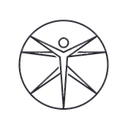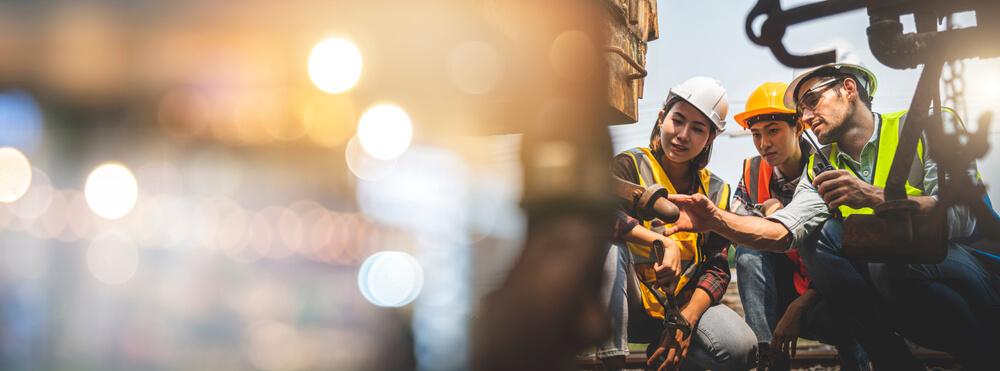Respiratory Protection Training | Fit Testing
Luke Curtis August 3, 2024
**Mastering Respiratory Protection Training for Workplace Safety! **
Respiratory Protection Training is critical for workplace safety. It is vital, particularly in environments with airborne contaminants, hazardous gases, or particulate matter. With respiratory hazards posing significant risks to employee health and well-being, mastering protection training is essential for ensuring a safe and healthy work environment. It equips you with the knowledge and skills to properly select, fit, use, and maintain respiratory protective equipment (RPE). With our expertise and experience, organizations can demonstrate their commitment to employee safety and compliance with regulatory standards. It reduces the risk of respiratory-related illnesses and injuries in the workplace. Get your hands on the essentials, and keep your workspace worry-free!
Basics of respiratory protection!
The basics of respiratory protection are fundamental to ensuring workplace safety in environments. The following are the highlights that are never to miss:
· **Hazard Assessment: **Conducting a thorough hazard assessment is the first step. Identify probable hazards, such as airborne contaminants, gases, vapors, dust, etc., and assess their concentration levels and potential health effects on workers.
· **Respiratory Hazard Control: **Implement engineering controls, like ventilation systems or process modifications, to minimize hazards in the workplace. If they are not feasible, respiratory protection may be necessary as an interim or supplementary measure.
· **Respirator Selection: **Select the appropriate type of respirator based on the identified respiratory hazards, workplace conditions, and specific tasks. Consider the level of protection, compatibility with personal protective equipment (PPE), etc.
· Fit Testing: Proper fit testing of respirators is essential to ensure a secure and effective seal between the respirator and the wearer's face. Conduct qualitative or quantitative fit tests according to the respirator manufacturer's instructions.
· Training and Education: Provide comprehensive training and education to workers on the use, maintenance, and limitations. Ensure they understand how to switch on, off, adjust, and perform user seal checks on their respirators.
· **Respirator Maintenance and Inspection: **Establish procedures for regular maintenance, cleaning, inspection, and storage. It ensures their continued effectiveness and serviceability. Inspect respirators before each use and replace damaged components.
· **Respiratory Health Monitoring: **Implement a respiratory health monitoring program to assess respiratory health. It helps detect early signs of respiratory problems or adverse effects related to respirator use. Conduct periodic medical evaluations.
· **Compliance with Regulations: **Ensure compliance with relevant regulatory standards set forth by the Occupational Safety and Health Administration (OSHA), the National Institute for Occupational Safety and Health (NIOSH), etc.
Regulations, standards, and equipment selection!
Regulations, standards, and equipment selection are the pillars of workspace safety. Explore their importance and enhance your knowledge of the protection training:
Compliance with Regulations
Regulatory agencies such as the Occupational Safety and Health Administration (OSHA) in the US and similar agencies worldwide establish regulations for respiratory protection. Compliance with these regulations is mandatory. It ensures that employers provide a safe and healthy work environment. Respiratory protection training educates workers and employers about their rights and responsibilities. It helps to prevent regulatory violations and potential fines.
Adherence to Standards
Industry-specific standards and guidelines provide valuable advice for respiratory protection practices. Standards set forth by organizations such as the American National Standards Institute (ANSI), the National Institute for Occupational Safety and Health (NIOSH), and the International Organization for Standardization (ISO) outline the criteria. It extends measures for respirator performance, fit testing procedures, maintenance protocols, and more. It helps you adopt best practices and uphold high safety and quality standards.
Equipment Selection
Proper selection of respiratory protection equipment is critical. It ensures adequate protection against respiratory hazards. Respirators come in various types, including disposable ones, half-face, full-face respirators, powered air-purifying respirators (PAPRs), and supplied air respirators (SARs). Each of them is for specific workplace conditions and levels of respiratory protection. Training educates workers on the types of respirators available, their intended uses, limitations, and proper selection criteria based on the hazards. It helps to select appropriate respiratory protection equipment and minimize the risk of exposure.
Fit Testing and Seal Checks!
Fit testing and seal checks ensure respiratory protective equipment effectiveness. They verify proper fit, minimizing exposure and enhancing safety.
· The fit test checks if the respirator properly fits an individual's face and forms a secure seal. It promises to prevent contaminants from entering via gaps between the respirator and the wearer's skin.
· A respirator that does not fit properly or fails to achieve a tight seal may allow contaminants to bypass the filtration system and enter the wearer's respiratory system, increasing the risk of exposure.
· By verifying the proper fit of respirators through fit testing and seal checks, employers can enhance the safety of their workforce. It reduces the likelihood of respiratory-related injuries or illnesses.
· It ensures worker's confidence in respiratory protective equipment by providing high protection. It allows them to perform their job tasks safely in potentially hazardous environments.
· Fit testing is compulsory by the Occupational Safety and Health Administration (OSHA) for certain types of respirators and specific workplace scenarios to ensure compliance.
· Fit testing is not a one-time event but rather an ongoing process. It needs periodic checks to ensure changes in factors that may affect respirator fit, such as weight fluctuations, facial hair growth, etc.
· Regular seal checks take place before each use of the respirator. It ensures that the seal remains intact and effective. It promises a healthy equipment practice for the employees.
Maintenance and Care of Respirators!
Regardless of the training, your involvement in maintaining high standards makes all the difference. Here are some tips and tricks to upkeep respirators in optimum condition:
· Promptly replace worn-out parts to maintain the respirator's integrity and effectiveness in providing protection.
· Clean respirators thoroughly using disinfectant wipes or solutions to remove dirt, debris, and contaminants.
· Pay close attention to areas of the respirator that come into contact with the face during cleaning.
· Ensure thorough drying of the respirator after cleaning to prevent the growth of mold and mildew.
· Store respirators in a dedicated area that is well-ventilated, clean, and free from direct sunlight or extreme temperatures.
· Avoid stacking heavy objects on top of respirators during storage to prevent damage to their structure.
· Use storage containers or bags designed for respirators to keep them clean and protected when not in use.
The best training services!
The market has many experts who claim to help you have the best Respiratory Protection Training for your workplace. Ensure the following traits, and you will have the best pick in hand:
· **Expertise: **Look for trainers with vast knowledge and experience in respiratory protection and occupational health and safety.
· Customization: Choose a training provider that offers customized programs tailored to your workplace hazards and industry needs.
· **Compliance: **Ensure the training programs meet regulatory standards and compliance conditions relevant to your industry.
· Interactive Learning: Opt for trainers who engage participants via interactive activities, practical sessions, and real-life case studies.
· **Hands-on Experience: **Seek a professional with hands-on practice with respiratory protective equipment, fit testing, and seal checks.
· **Comprehensive Coverage: **Select training that covers hazard checks, respirator pick, proper use, maintenance, and storage.
· **Certification: **Choose training programs that provide you certification of completion to demonstrate compliance.
· **Ongoing Support: **Look for training providers that offer ongoing support, such as access to online materials, refresher courses, etc.
· Positive Reviews: Check for testimonials and reviews from previous clients to gauge the effectiveness and quality of the training services provided.
Conquering aspects of respiratory protection drills is paramount for maintaining workplace safety and protecting employee health. Investing in comprehensive training allows you to mitigate the risks associated with contaminants and ensure crew well-being on the job. It enhances workplace safety and fosters a culture of responsibility, preparedness, and compliance with regulatory standards. As organizations prioritize the health and safety of their workforce, learning to pick the best providers is also a must. Choose professionals like us who help you focus on your needs and customize your training to the changing world. Reach out to Postured Ergonomics, talk to our experts, and get your quote now!

